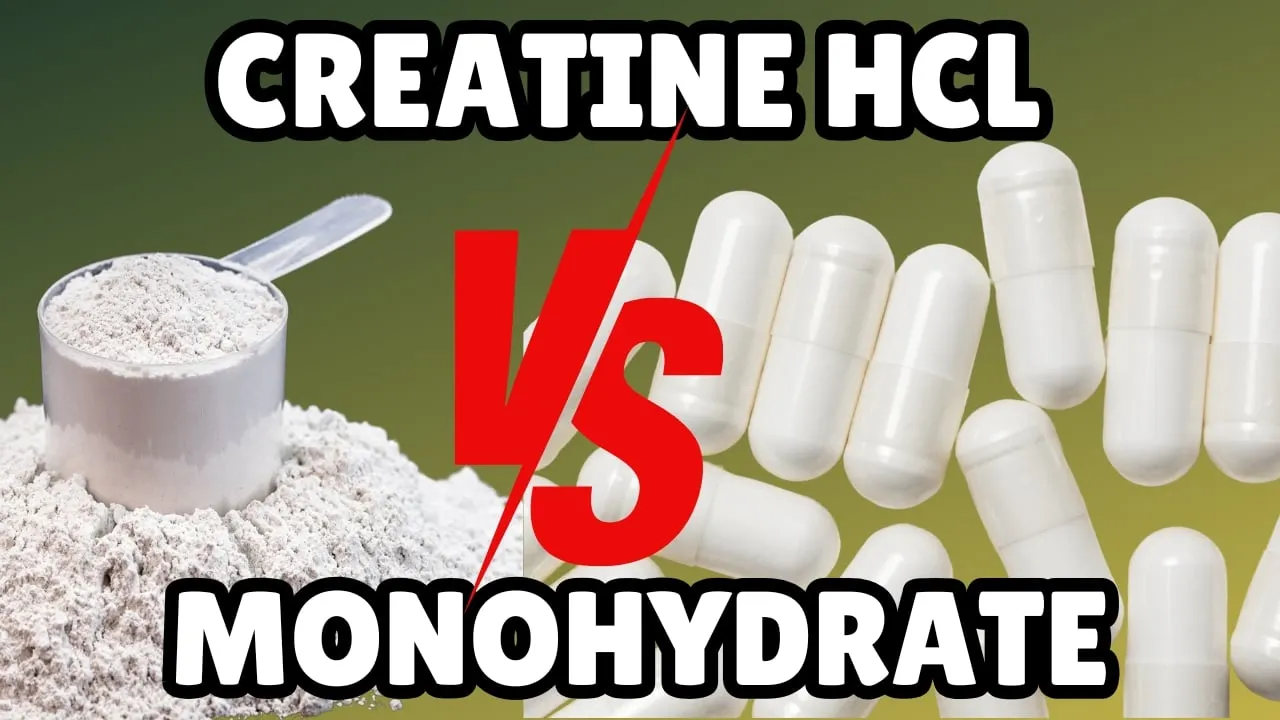Cat's Claw: Uses, Benefits, Side Effects, and Information
Discover the Power of Herbal Extracts: Cat’s Claw and Its Anti-Inflammatory Benefits
Cat’s claw is gaining popularity as a herbal extract with powerful antiinflammatory properties—especially for those battling conditions like rheumatoid arthritis.
Derived from a tropical vine native to South and Central America, this plant has been used in traditional medicine for centuries.
But modern research is now backing up many of these ancient claims with clinical data and real mechanisms of action.
This article is worth reading if you're seeking natural relief from inflammatory conditions, interested in the immune system’s modulation, or curious about how the extract from the pentacyclic alkaloid-chemotype of cat’s claw could potentially support your health.
We’ll explore the science behind this powerful herbal remedy and answer some of the most common questions about its uses, risks, and benefits.
Article Outline
1. What Is Cat’s Claw and Where Does It Come From?
2. How Does Cat’s Claw Work in the Body?
3. Can Cat’s Claw Help with Rheumatoid Arthritis?
4. What Are the Key Compounds in Cat’s Claw Extract?
5. What Does Research Say About Cat’s Claw as an Anti-Inflammatory?
6. How Does Cat’s Claw Affect the Immune System?
7. Is Cat’s Claw Safe? Side Effects and Interactions to Know
8. How Should You Take Cat’s Claw Extract for Maximum Benefit?
9. Cat’s Claw vs Other Herbal Remedies: How Does It Compare?
10. Should You Use Cat’s Claw as a Dietary Supplement?
1. What Is Cat’s Claw and Where Does It Come From?
Cat’s claw is a tropical vine found in the Amazon rainforest and other parts of South and Central America. Its name comes from the claw-shaped thorns that grow along its stem.
The two most commonly used species are Uncaria tomentosa and Uncaria guianensis, though Uncaria tomentosa is the most widely studied for its medicinal properties.
In traditional medicine, cat’s claw was used to treat inflammation, digestive issues, and infections.
Modern interest in the plant focuses on its extract—especially those rich in oxindole alkaloid compounds—which have shown promise in modulating the immune system and reducing inflammation.
Both the root and bark are used to produce a variety of extracts, including aqueous extract, water extract, and alcohol-based tinctures.
2. How Does Cat’s Claw Work in the Body?
The extract of Uncaria tomentosa works primarily by influencing the immune system and reducing inflammatory responses.
Several active compounds, especially pentacyclic oxindole alkaloids, play a key role in this action.
One of the most notable effects is how cat’s claw inhibits TNFalpha production and scavenges free radicals—a mechanism believed to support its anti-inflammatory and antioxidant activities.
Cat’s claw appears to impact the production of pro-inflammatory cytokines and block inflammatory signaling pathways.
These mechanisms of action make it potentially beneficial not only for arthritis sufferers but also for those with other autoimmune or inflammatory conditions.
Some evidence also suggests cat's claw might make the immune system more efficient at detecting and repairing cellular damage, possibly contributing to its role in cytoprotection.
3. Can Cat’s Claw Help with Rheumatoid Arthritis?
Yes, evidence suggests cat’s claw may be helpful for individuals with rheumatoid arthritis and osteoarthritis.
A randomized double blind trial involving cat’s claw extract for 4 weeks found a reduction in the number of painful and swollen joints in patients with rheumatoid arthritis.
This aligns with findings from another blind trial of an extract that showed improvements in osteoarthritis of the knee. Researchers concluded that the anti-inflammatory effects and the ability to reduce TNF-alpha levels were likely contributing factors.
In addition, the activities of Uncaria tomentosa include blocking specific enzymes and pathways involved in joint degradation, which could make it a promising herbal treatment alongside conventional therapies.
4. What Are the Key Compounds in Cat’s Claw Extract?
The most potent bioactive compounds in cat’s claw are oxindole alkaloids, specifically the pentacyclic type, which are known for their antiinflammatory and immune-modulating effects. These alkaloids help regulate white blood cell function and cytokine release.
Other important compounds include quinovic acid glycoside, known for its antioxidant properties, and several new compounds identified with anti-inflammatory activity.
There are different types of cat’s claw extracts depending on the method of preparation—such as aqueous extract from Uncaria tomentosa, novel aqueous extract, and tomentosa extract. These variations affect the potency and the concentration of the active ingredients.
5. What Does Research Say About Cat’s Claw as an Anti-Inflammatory?
Numerous studies have validated the antiinflammatory potential of cat’s claw extract. A key finding is that claw inhibits TNFalpha production, a cytokine heavily involved in chronic inflammation and autoimmune disorders.
Furthermore, studies on RT4 human bladder cancer cell lines have revealed pro-apoptotic effects, suggesting additional benefits in limiting cancer cell growth. However, while promising, the effect of Uncaria tomentosa on cancer cell lines is still in early research stages.
In terms of inflammation, the anti-inflammatory activity of two different extracts showed effectiveness in reducing swelling and immune overactivation.
This makes cat’s claw especially intriguing for conditions like rheumatoid arthritis, where inflammation is chronic and systemic.
6. How Does Cat’s Claw Affect the Immune System?
Cat’s claw has a dual relationship with the immune system—it both stimulates and regulates immune activity. The pentacyclic oxindole alkaloid content is thought to improve the body's defense mechanisms while also calming excessive immune responses.
The extract increases the number of white blood cells in some studies, enhancing immune surveillance. At the same time, its antiinflammatory actions help prevent autoimmunity, which is particularly relevant to rheumatoid arthritis.
However, this also means caution is necessary. Because claw may interfere with immunosuppressive medications, it’s important to consult a healthcare provider before combining cat’s claw preparations with pharmaceuticals.
7. Is Cat’s Claw Safe? Side Effects and Interactions to Know
For most people, the effects and side effects of cat’s claw are minimal. Adverse effects are rare, but they can include dizziness, nausea, and digestive upset. Some reports suggest cat's claw might lower blood pressure, which is a concern for those on hypertension meds.
Also, cat’s claw along with medications like protease inhibitors (e.g., atazanavir) could lead to interactions. Pregnant and breastfeeding women should avoid using cat’s claw due to a lack of safety data.
There’s also a concern that cat's claw might overstimulate the immune system in people with autoimmune diseases, although this hasn't been conclusively proven. As always, understanding the possible side effects is essential before using any herbal remedy.
8. How Should You Take Cat’s Claw Extract for Maximum Benefit?
Cat’s claw comes in various forms—extract, capsules, powders, teas, and tinctures. The most effective versions appear to be tomentosa extract and claw extract standardized for pentacyclic oxindole alkaloids.
Experts often recommend a dosage based on body weight or condition severity. Taking cat’s claw in a dietary supplement that clearly indicates its oxindole alkaloid content is best practice.
You should use cat's claw consistently for several weeks to notice effects. In studies, cat’s claw extract for 4 weeks resulted in meaningful symptom relief for arthritis sufferers.
9. Cat’s Claw vs Other Herbal Remedies: How Does It Compare?
When comparing cat’s claw to other herbal anti-inflammatories like turmeric or boswellia, cat’s claw holds its own—especially for autoimmune-related conditions like rheumatoid arthritis.
The unique blend of pentacyclic oxindole alkaloid and quinovic acid glycoside give cat’s claw a distinct advantage in immune system modulation and anti-inflammatory effects.
While turmeric focuses more on antioxidant effects, cat's claw provides deeper immune system regulation. This makes it a strong candidate for long-term use in chronic inflammation conditions.
10. Should You Use Cat’s Claw as a Dietary Supplement?
Yes—cat’s claw can be a valuable addition to your health regimen, especially if you’re looking for a herbal, natural antiinflammatory solution. Just ensure that your dietary supplement uses a high-quality extract—preferably an extract of Uncaria tomentosa with verified active compounds.
Be mindful of your personal health status. For example, cat's claw may cause interactions if you’re taking blood pressure meds or immune-suppressing drugs. Taking cat's claw without professional advice could lead to unintended consequences.
Still, many people use cat's claw daily without issue, and its benefits—especially in managing rheumatoid arthritis and reducing inflammation—are well-documented.
Key Takeaways: What You Need to Know About Cat’s Claw
- Cat's claw is a vine from South and Central America, traditionally used for its anti-inflammatory and immune-modulating properties.
- Its power comes from compounds like pentacyclic oxindole alkaloid and quinovic acid glycoside.
- Research supports its benefits for rheumatoid arthritis, with one randomized double blind trial showing decreased joint pain.
- Cat’s claw extract can inhibit TNFalpha production and reduce oxidative stress.
- Common forms include aqueous extract, tomentosa extract, and capsules standardized for oxindole alkaloid content.
- Cat's claw might lower blood pressure and should not be taken with certain medications.
- The activities of Uncaria tomentosa show both immune stimulation and inflammation reduction.
- Possible side effects are rare but can include dizziness and nausea.
- Always consult a healthcare provider before taking cat’s claw, especially if you have chronic conditions or are on medication.













